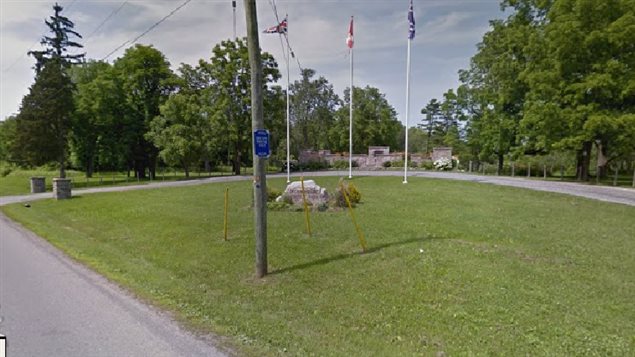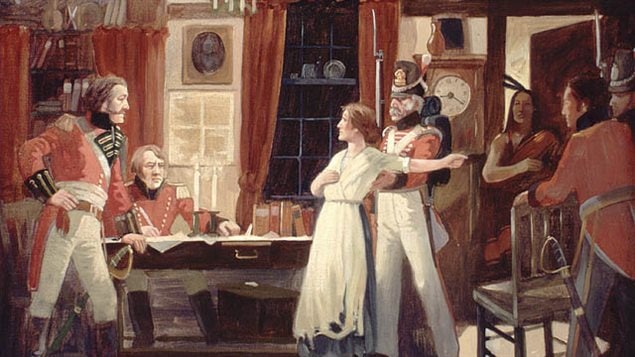It is the stuff of legend,
In wartime, a woman walks 30 kilometres through woods in darkness, risking encounter by enemy patrols in order to warn of an impending attack. That warning saves the day for the defenders. It was during the war of 1812 as the U.S tried to invade and take over Canada..
In late May of 1813, the Americans launched a surprise attack across the Niagara River and had captured Fort George at the mouth of the river in Niagara-on-the-Lake. The smaller British forces withdrew leaving the surrounding area open. An advance party of Americans then moved further inland and occupied the Queenston (St David’s) house of James and Laura Secord. James, who had fought against the Americans in an earlier battle was still recovering at home from his wounds
On the evening of June 22, 1813, Laura Secord (or perhaps her wounded husband) heard the officers discussing plans for a surprise attack on a British headquarters at the DeCew house some 30 kilometres away. If they could defeat the British and Mohawk force there, the Americans would control the entire Niagara Peninsula. This was vital news.

Late that night she slipped away from the house and began the long trek in the darkness to warn the British. As she got closer to the DeCew house she encountered allied Mohawks who took her to Lt. James Fitzgibbon at the DeCew headquarters.

Now forewarned of the American plans, the Mohawk and British began preparations to intercept the force of over 600 invaders..
On the 24 of June the Mohawks were in position in a wooded area a little over a kilometre away as the Americans headed toward Beaver Dams settlement.
The Mohawks engaged the force and the battle raged. The surprised Americans withdrew into the forest only to find the British there. Under a flag of truce, Fitzgibbon whose much smaller British force, convinced the Americans they were surrounded and if they did not surrender he would be unable to restrain the Mohawks.
As another force of British regulars arrived, the wounded American Colonel surrendered.

The loss demoralized the Americans who thereafter rarely ventured outside the captured Fort George, which they abandoned in December of that year. Thus any deeper incursion and attempt to occupy Canada through the Niagara Peninsula was stopped. This significantly contributed to the overall failure of the Americans to capture the British colony that would eventually become Canada.
As for Laura Secord, her story is not such a happy one. The Secord house was burned during the war and the family struggled. When James died in 1841, his meagre war pension was gone too. She forever struggled both financially and for recognition for her deed but was continually denied. The only compensation was a 100 Pound grant by the Prince of Wales her heard her story when she was 85.. . She died in 1868 at age 93.
Her story was “rediscovered’ in the early 1900’s and since then plays, and books, and songs have been written about the exploit and today is recognized as a Canadian heroine. The Secord house was restored in 1971 and serves as a local museum.







For reasons beyond our control, and for an undetermined period of time, our comment section is now closed. However, our social networks remain open to your contributions.